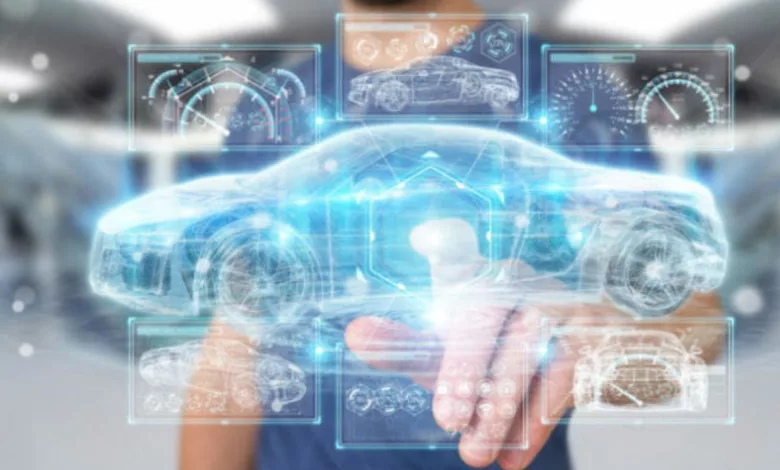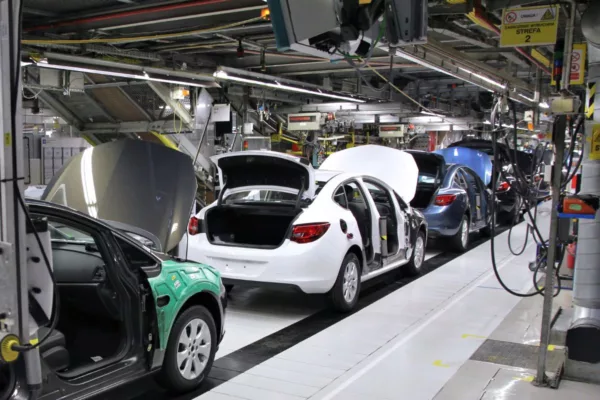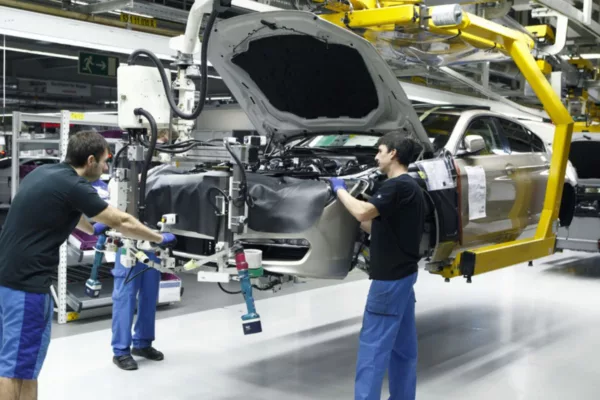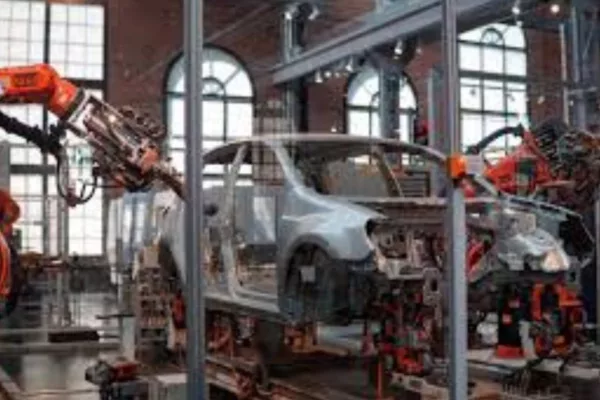Expectations for the Automotive sector in the 2023 budget

Expectations for the Automotive sector in the 2023 budget
India’s automotive industry significantly impacts its GDP and employment, making it a crucial sector of the economy. A growing middle class with more disposable income and the increasing demand for personal vehicles have contributed to the extraordinary expansion of the Indian automotive industry in recent years.
A shift in the market towards electric and hybrid cars is also caused by the government’s drive for electric mobility and rising environmental awareness. With close to 34–37 million direct and indirect jobs, the automotive industry significantly contributes to India’s industrial economy.
Pandemic-driven disruptions halted the expansion of this industry. The sector saw unheard-of periods when demand declined, commodity prices rose, essential components were out of stock, and capacity utilization was poor.
The industry has experienced a significant rebound thanks to renewed demand and hints of better component availability. Electric vehicle awareness and adoption are growing simultaneously, but problems remain.

Although India has so far been able to control inflation adequately, we are not immune to global inflation. Increased input costs, notably import expenses, are anticipated, and high oil prices will further contribute to inflation. This will have an immediate effect on how much consumers spend on cars.
Many OEMs are releasing new EV models as interest in electric vehicles grows across all market groups. If the battery and other component prices decrease and consumer anxiety over charging infrastructure is addressed simultaneously, adoption will happen more quickly.
The industry is undergoing a technological revolution that requires substantial investment and is also experiencing inflationary pressures. The government has been able to assist the business despite the uncertain outlook because of substantial GST and direct tax collections.
Both price and safety will be priorities for consumers. Automobile vehicle and component producers will seek financial assistance and protection from rising input costs. Government efforts will be directed toward creating jobs, improving skills, and lowering import costs.
Key consumer trends are, for the most part, outstanding. Vehicle sales in all industries in PVs are at an all-time high. Nearly 93 per cent of the car owners who purchased their current car in our latest poll plan to buy a new one.
Consumer preference for EVs has increased by 60% from the previous year in the case of EVs, but consumers are still wary. Forty per cent of consumers are unsure about the safety of battery technology, while 43 per cent are worried about the infrastructure for charging.
Rationalisation of GST in the Automotive sector
We must keep supporting this growth narrative. In the case of EVs, the FAME policy was implemented to address the affordability issue and will aid in adoption by closing the price difference between ICE and EVs.
However, the policy is only in effect until March 2024, and a continuing plan after this date would be beneficial. It will assist in addressing issues relating to high original cost, battery replacement cost, and low resale value. EVs are currently subject to a GST of 5%, although their parts are either 18% or 28%. The overall cost and part expenses during vehicle service will be decreased by lowering the GST for components.

Improvements in the driving range have been made possible through investments in technology made by component manufacturers and OEMs. More than half of studied consumers would wait between 10 and 40 minutes for their vehicle to charge at a public charging station from empty to 80%, defying the belief that setting time must be equivalent to filling up with conventional fuels.
Given this situation, charging infrastructure requires a significant fix. Although FAME II offers subsidies for EV chargers, relatively little has been used. While more than 2,700 chargers were planned, only roughly 50 were operational as of July 2022. The main impediment is the expensive allied infrastructure, such as the cost of land and power.
A dedicated EV service station with amenities, which would require more space, is something that about 33% of consumers in our study seek. Therefore, the subsidy should be updated to meet these needs and promote the installation of public charging stations, which is essential for the next stage of EV growth.
The future of EVs
Promoting battery refurbishment, reuse (second life), and recycling need a clear push within the EV ecosystem and infrastructure. The policy about battery changing needs to be finalized, even though this is a medium- to long-term solution to lower the overall cost of the battery. Tax breaks rather than direct short-term subsidies, carbon credits or “green credits” for recycling or reusing EV batteries, donations for power supplies for battery swapping arrangements, and low-rate land leasing alternatives are a few areas on which the government might concentrate.
The announcement of EV lending as a priority sector lending has also been requested, given the emergence of new business models, including battery subscription and battery as a service.
There used to be different GST rates for EVs without batteries and the battery itself. Due to variances in input credit ability, customers had to pay more. EVs are becoming more affordable now that these items are at the lowest GST rate.
GST on electric vehicles (EVs) has been lowered from 12 to 5 per cent, and on Li-ion battery packs and charging stations from 18 to 5 per cent. This innovative slab was developed exclusively for e-mobility.
We do not anticipate any modifications to this slab; the more significant concern is domesticating technology and lowering import taxes, particularly in this inflationary era.
Lithium-ion batteries currently have a 15% import tariff, compared to a 5% import duty on lithium-ion cells. Any decrease in import duties for components used in the production of lithium-ion batteries in India will lower costs and boost demand. Since India is well behind in producing Li-Ion batteries and must import 70% of its needs, this should be a positive development.

Import duty decrease will correspond with PLI programmes like ACC Battery manufacture and automotive PLI, which significantly rely on domestic value addition in India. Thus, made-in-India batteries will lessen reliance on imports while also helping to expand the local manufacturing space.
Driving safety
The importance of convenience and safety is rising. The pricing point has shifted on average to roughly Rs 10 lakh, showing that consumers are willing to spend more money. By requiring six airbags, the government is also taking positive steps. A PLI-style plan is needed to prevent sudden cost increases necessary to comply with these rules.
OEMs would worry more due to the high costs associated with developing and acquiring safety airbags. If this issue is not resolved, every automobile sold in the small to mid-level segment would see a price increase of at least Rs 25,000 to Rs 35,000.
The Auto and Auto Components PLI garnered significant interest and is currently in the first of its five good years (2022-23). The incentive is prospective because it aims for 50% localization (an increase from the 20% we currently see).
How many OEMs, particularly in the 4W category, will be able to meet the necessary threshold sales in the first year of 2022–2023 remains to be seen. The battery accounts for roughly 40%–60% of the cost of the car (depending on 4w vs 2w), and certain other parts that contribute 10-15% to the vehicle must be imported.
Thus, 50% localization is only feasible. Suppose there is significant localization in battery packs and BMS/sensor assembly. As a result, this plan’s actual advantages won’t materialize until it grows in scope.
Given the pace of technological advancement in the automobile industry, it is critical to address both R&D capacity and investments. To bring the best-in-class items to the Indian customer at fair rates, businesses and the government must commit to these long-term changes.
The Indian automobile industry anticipates several steps to promote the sector’s growth in the next Union Budget 2023 due to the present change. These include implementing new policies to encourage EV use and maintaining and enhancing existing policies and programmes, like the FAME programme. Additionally, the sector anticipates specific changes to the GST, PLI programmes, etc.
Numerous reasons are driving the domestic automotive industry’s tremendous development potential. But there are obstacles in the way of the sector’s expansion, and the government’s support and policies will be essential in overcoming these obstacles.
The expectations from different players in the sector are listed below.
Spinny’s founder and CEO, Niraj Singh: The rising inclination for personal mobility and the disappearance of the stigma associated with owning a used car as the market becomes increasingly organized have contributed to a dramatic increase in used car sales over the past 4-5 years.
Historically, the unorganized sector has dominated the used car industry. However, the percentage of organized players has climbed from 8% to 19% over the last few years. In light of this, lowering GST rates will stimulate initiatives to increase transparency in the variables-dominated segment.
Similar to this, the government should examine incentives like allowing people to deduct the cost of their vehicles from their taxes, liberalizing tax breaks, and allowing lower interest rates on capital, as these measures would encourage people to buy and upgrade their vehicles while also boosting India’s GDP and improving the organization of the used car market.
The Ministry of Road Transport and Highways’ new regulations will level the playing field between formally formed and loosely organized organizations by promoting openness and addressing issues with accountability and responsibility. In the 2019 budget, the government will undoubtedly announce workable policy changes and noteworthy initiatives to advance the industry.
Director of Operations Sanjeev Vasdev, FLASH: The Indian automotive industry is expanding, with the auto component market playing a crucial part in the development. While the industry is undergoing a paradigm transition toward electric mobility, the auto components sector is going through a disruptive period due to these cutting-edge developments.
One of the main goals for the budget is to lower the GST rate from 28% to 18%. The local players will be highly encouraged to invest in more modern technology for improved mobility services, even globally. The adjustment in GST will provide significant aid and boost the quickly expanding sector, even though the government has supported the car industry through various programmes and incentives.
Edited by Prakriti Arora




